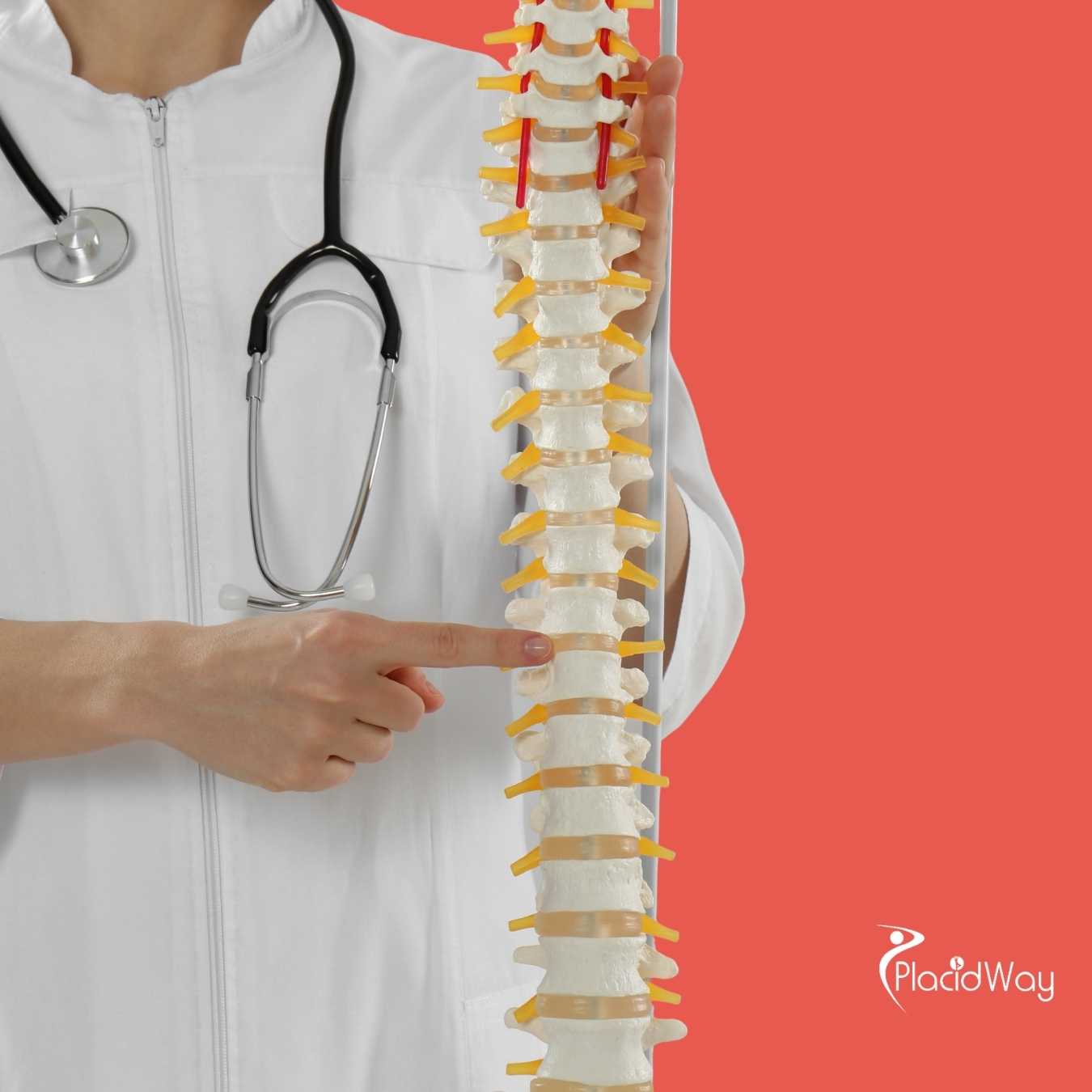Exploring the Effectiveness of Stem Cell Therapy for Back Pain Relief
.png)
Living with chronic back pain can be incredibly challenging, impacting every aspect of your life, from daily activities to overall well-being. Many individuals seek innovative solutions when conventional treatments fall short, and one approach gaining significant attention is stem cell therapy for back pain. You might be wondering if this cutting-edge treatment truly delivers on its promises or if it's just another fleeting trend in healthcare. It's a valid question, as the world of regenerative medicine is complex and constantly evolving.
In this comprehensive guide, we'll delve deep into whether stem cell therapy really works for back pain, addressing common queries and providing clear, research-informed answers. We'll explore the science behind it, the types of conditions it may help, potential benefits, costs, and even considerations for those exploring options like medical tourism. Our goal is to equip you with the knowledge to understand this therapy better and make informed decisions about your own health journey.
Does Stem Cell Therapy Really Work for Back Pain?
The question of whether stem cell therapy works for back pain is complex, but current evidence suggests it holds significant promise for specific conditions. This therapy focuses on using the body's own regenerative capabilities to repair damaged tissues rather than just masking pain. For issues like degenerative disc disease, where the spinal discs lose hydration and integrity, or facet joint arthritis, where cartilage wears down, stem cells can potentially offer a restorative effect.
Studies and clinical trials have indicated that stem cells, particularly mesenchymal stem cells (MSCs), can reduce inflammation, promote the growth of new cartilage and disc tissue, and alleviate pain. While it's not a universal cure-all and results can vary, many patients report significant improvements in pain levels and mobility. It's important to have realistic expectations and understand that while it may not completely reverse severe degeneration, it can often provide substantial relief and improve quality of life for those suffering from chronic back pain.
What Types of Back Pain Can Stem Cell Therapy Help?
Stem cell therapy is typically considered for specific types of back pain where tissue damage or degeneration is a primary contributor. The most common applications include:
- Degenerative Disc Disease (DDD): This is a major focus, as stem cells can potentially help regenerate the nucleus pulposus (the inner part of the disc) and annulus fibrosus (the outer ring), improving disc hydration and structure, thereby reducing pain associated with disc breakdown.
- Facet Joint Arthritis/Osteoarthritis: When the small joints connecting the vertebrae become inflamed and their cartilage wears down, stem cells may help reduce inflammation and promote cartilage repair.
- Ligament and Tendon Injuries: For chronic sprains or strains in the back that haven't healed properly, stem cells can assist in the repair and strengthening of these connective tissues.
It's generally less effective for nerve compression issues unrelated to disc or joint degeneration, or for pain originating from systemic inflammatory conditions not directly addressed by localized tissue repair. A thorough diagnosis by a qualified physician is crucial to determine if stem cell therapy is an appropriate treatment option for your specific type of back pain.
How Do Stem Cells Help Alleviate Back Pain?
The mechanism by which stem cells, particularly mesenchymal stem cells (MSCs), help alleviate back pain is multifaceted and involves several key biological processes:
- Anti-inflammatory Effects: MSCs release potent anti-inflammatory molecules that can calm the inflammatory environment often present in degenerated discs and arthritic joints. This directly reduces pain and discomfort.
- Immunomodulation: They can modulate the local immune response, preventing the body from further attacking or breaking down damaged tissue and instead fostering a healing environment.
- Growth Factor Secretion: Stem cells secrete various growth factors (e.g., FGF, PDGF, TGF-beta) and cytokines that stimulate local cells to repair and regenerate damaged tissue, such as cartilage, bone, and soft tissues.
- Differentiation Potential: Under specific physiological conditions, some stem cells have the ability to differentiate into specialized cells like chondrocytes (cartilage cells) or disc cells, directly contributing to tissue repair and structural improvement.
These combined effects work synergistically to not only reduce pain but also to address the underlying cause of the pain by promoting repair and regeneration of the compromised structures in the back.
What Are the Different Types of Stem Cell Therapy for Back Pain?
When considering stem cell therapy for back pain, it's important to understand the different sources of stem cells used. The most common and generally accepted types include:
- Bone Marrow Aspirate Concentrate (BMAC): This is an autologous (from the patient's own body) procedure where bone marrow is extracted, usually from the hip, and concentrated to isolate mesenchymal stem cells (MSCs) and growth factors. It's then injected into the injured area of the back. BMAC has a long history of use in orthopedic applications.
- Adipose-Derived Stem Cells (ADSCs): Also autologous, these stem cells are harvested from the patient's own fat tissue, typically through a mini-liposuction procedure. Fat tissue is a rich source of MSCs, which are then processed and injected.
Less common, and often subject to more regulatory scrutiny depending on the region, are allogeneic products (from a donor) such as:
- Amniotic Fluid/Membrane-Derived Products: These are derived from donated amniotic fluid or membrane tissue after a healthy birth. They contain growth factors and some progenitor cells, but the number of live stem cells can vary.
- Umbilical Cord-Derived Products: Similar to amniotic products, these are sourced from donated umbilical cord tissue. They are rich in growth factors and can contain MSCs.
Each type has its own advantages and considerations, and the choice often depends on the specific condition, clinician's preference, and regulatory landscape. Autologous treatments are generally considered safer due to the use of the patient's own cells, minimizing rejection risk.
What is the Recovery Time After Stem Cell Injections for Back Pain?
After receiving stem cell injections for back pain, patients typically experience a relatively short initial recovery period, followed by a longer phase of gradual improvement. Immediately after the procedure, it's common to feel some localized soreness, bruising, or mild swelling at the injection site, which usually subsides within a few days. Rest and gentle activity are generally recommended during this initial period.
The true healing and regenerative processes initiated by the stem cells take time. Patients should not expect immediate pain relief, as the therapy works by repairing tissue rather than just blocking pain signals. Significant improvements in pain reduction and function are usually observed over several weeks to a few months, with optimal results potentially manifesting six months or even up to a year post-injection. A typical recovery timeline might look like this:
| Timeframe | Expected Experience/Activities |
|---|---|
| First 2-3 Days | Mild soreness, rest, avoid heavy lifting; no strenuous activity. |
| 1-2 Weeks | Pain gradually subsides; light activities resume; physical therapy may begin. |
| 1-3 Months | Noticeable reduction in pain and improved function; continued physical therapy. |
| 3-6 Months+ | Optimal results typically observed; continued improvement in tissue regeneration. |
Adherence to post-treatment guidelines, including physical therapy, is critical for maximizing the benefits of stem cell therapy for back pain.
What Are the Risks and Side Effects of Stem Cell Therapy for Back Pain?
While stem cell therapy for back pain is generally considered safe, especially when using autologous cells (from the patient's own body), like any medical procedure, there are potential risks and side effects. Most side effects are minor and temporary:
- Injection Site Discomfort: Pain, swelling, bruising, or tenderness at the site of injection in the back is common and usually resolves within a few days.
- Infection: As with any injection, there's a small risk of infection, which is minimized by sterile techniques.
- Bleeding: Minor bleeding or hematoma formation at the injection site can occur.
For autologous procedures (e.g., BMAC or ADSC), additional risks are associated with the cell harvesting process:
- Bone Marrow Aspiration: Can cause localized pain, bruising, or nerve irritation at the hip.
- Adipose Tissue Harvesting (Liposuction): May lead to bruising, swelling, or numbness in the area where fat was extracted.
More serious complications, though rare, can include nerve damage, allergic reactions, or adverse reactions to anesthesia if used. It's crucial to choose a reputable clinic with experienced physicians who follow strict safety protocols to minimize these risks and ensure the highest standards of care for your back pain treatment.
How Much Does Stem Cell Therapy for Back Pain Cost?
The cost of stem cell therapy for back pain can vary significantly, making it a crucial consideration for many patients. Several factors influence the overall price:
- Type of Stem Cells Used: Autologous treatments (using the patient's own cells like BMAC or ADSC) often involve a procedure to harvest cells, which adds to the cost. Allogeneic products (from donors) also have varying price points based on processing and sourcing.
- Clinic and Location: Prices can differ greatly between clinics, geographical locations, and countries due to varying overheads, physician fees, and market demand.
- Number of Injections/Treatment Sessions: Some conditions may require multiple injections or repeat treatments, increasing the total cost.
- Ancillary Services: The inclusion of imaging guidance (e.g., fluoroscopy or ultrasound), post-procedure rehabilitation, and follow-up consultations can all impact the final price.
Unfortunately, because many stem cell therapies for back pain are still considered experimental or investigational, they are typically not covered by health insurance plans in many countries. Patients often pay out-of-pocket, making it essential to discuss all costs transparently with the clinic upfront. A comprehensive quote should include all aspects of the treatment from consultation to follow-up.
Can I Travel Abroad for Stem Cell Therapy for Back Pain?
Yes, traveling abroad for stem cell therapy for back pain, a practice known as medical tourism, has become a viable option for many. Patients often choose this route for several compelling reasons:
- Cost-Effectiveness: In many countries, the cost of advanced medical treatments, including stem cell therapy, can be significantly lower than in their home countries, even when factoring in travel and accommodation expenses. This can make the therapy more accessible for those without insurance coverage.
- Access to Specific Treatments: Some countries have more advanced or experimental therapies available, or a broader range of approved treatments than others, particularly concerning certain types of stem cell applications.
- Shorter Wait Times: In some healthcare systems, long waiting lists for specialized procedures can be a deterrent. Traveling abroad often allows for quicker access to treatment.
- Expertise and Experience: Certain clinics and doctors abroad specialize extensively in regenerative medicine and stem cell therapy for back pain, offering a depth of experience that can be appealing.
However, it's crucial to thoroughly research and vet clinics, understand the regulatory environment of the destination country, and consider logistics like language barriers and post-treatment care before making a decision to travel for your back pain treatment.
What Should I Look for When Choosing a Clinic for Stem Cell Therapy for Back Pain Abroad?
Selecting the right clinic abroad for stem cell therapy for back pain requires careful consideration to ensure safety, efficacy, and a positive experience. Here are key factors to evaluate:
- Accreditation and Regulatory Compliance: Verify if the clinic is accredited by recognized international bodies (e.g., JCI) and operates within the legal and ethical guidelines of its country regarding stem cell treatments.
- Physician Qualifications and Experience: Research the doctors' credentials, specialization in regenerative medicine, and specific experience with stem cell therapy for back pain. Ensure they are board-certified and have a strong track record.
- Treatment Protocols: The clinic should have clear, evidence-based protocols for cell harvesting, processing, and injection. Inquire about the type of stem cells used, the source, and the method of administration.
- Transparency and Communication: The clinic should provide clear information about the treatment plan, expected outcomes, potential risks, and a detailed breakdown of all costs. Effective communication, possibly with translation services, is vital.
- Patient Support Services: Look for clinics that offer comprehensive support, including assistance with travel logistics, accommodation, pre- and post-treatment care, and follow-up. Reading patient testimonials and reviews can also provide valuable insight.
Thorough due diligence in these areas will help you make an informed decision and reduce potential risks associated with seeking medical treatment internationally for your back pain.
Is Stem Cell Therapy for Back Pain FDA Approved?
The regulatory landscape for stem cell therapy, especially in the United States, is quite stringent. While the FDA has approved certain stem cell-based products for specific conditions, such as blood cancers and some immune disorders (e.g., hematopoietic stem cell transplantation), it has generally not approved unproven **stem cell therapies for back pain** or other orthopedic conditions that use cells which have been more than "minimally manipulated."
The FDA considers cells that are significantly processed, expanded, or used for purposes other than their original function (e.g., injecting adipose-derived stem cells into a degenerated disc) to be drugs. These require rigorous clinical trials to prove safety and efficacy before they can be legally marketed and used. While some clinics in the U.S. may offer stem cell procedures, they often operate under different interpretations of FDA guidelines, or within research protocols. It's crucial for patients to understand that many regenerative treatments for back pain are still considered experimental or investigational by regulatory bodies like the FDA, and their efficacy is still under evaluation. Always verify the regulatory status of any proposed stem cell treatment with a trusted medical professional and the relevant authorities.
Considering your options for managing back pain or exploring innovative treatments? PlacidWay connects you with trusted global healthcare providers specializing in advanced therapies like stem cell therapy. Discover personalized medical solutions and make informed decisions for your health journey.


.png)









Share this listing